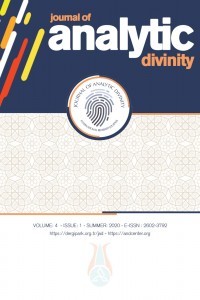
Journal of Analytic Divinity
Yazarlar: Aynur KOÇAK, Serdar GÜRÇAY
Konular:Din Bilimi
Anahtar Kelimeler:Dragon,Hero,Culture,Motif,Hagiography
Özet: Alevi-Bektashi hagiography texts cover the miracles of important individuals who are members of same tradition. On the other hand, dragon is a known, mythological creature. Even if it is multi-cultural, the focus position of dragon is ancient eastern and central Asian. In the east it has superior, divine qualities, symbolizing space and nature; in the west, it symbolizes evil and enmity. In different societies, dragon’s appearance also varies; sometimes depicted as a serpentine, sometimes with four legs, other times as multi-headed. When viewed from the Jung perspective, it has psychoanalytic meanings; as being both shadow archetype and being an important step in character development. The hero fights with a dragon and matures. In Turkish culture, the presence of the creature's portrayal is also worth considering. The dervishes who arrived to Anatolia in the 13th century have certain miracles including moving the mountains and slaying dragons. As Alevî-Bektaşî hagiography texts also involve the dragon creature, it becomes a distinguishing topic. This study concern about the interpretation of dragon symbolism in the hagiography texts of Sarı Saltuk, Şuca’eddn Vel, Koyun Baba, Demr Baba, Otman Baba and Haci Bektâş‑i Veli. In the first section; the concept of power figure is explained, later on dragon motif and the roles it possesses are told in comparative mythology. In the second section, before entering the context of hagiography texts, the place of dragon symbolism in these texts are taken into consideration in terms of various religions such as Shamanism, Buddhism and Christianity. The third section concerns about the main topic of the study which is the interpretation of dragon image inside the seven Alevi-Bektashi hagiography texts while involving interconnected keywords. It is revealed that the dragon figure has multiple location of origin as the figure can be seen in myths of different cultures. Additionally, the motif of two heroes struggling with a dragon can be seen both in some hagiography texts and several legends. Finally, several phases of the heroes’ adventures are similar to Campbell’s Monomyth. In the appendix section, the hagiography texts, the monomyth graphics and the comparison table are given.